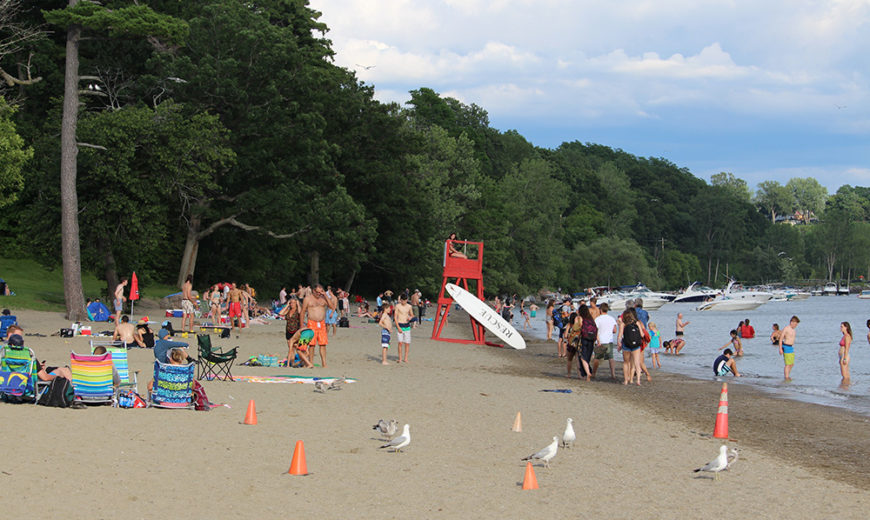Summer Safety Series: Safe Swimming

Stay Safe in Lake Champlain
Going for a swim in the lake is one of the best parts of spending time at one of our beautiful beaches on a hot day. While you’re having fun in the water, it’s important to keep in mind safe swimming practices. Below you’ll find a list of some important safety tips.
One of the most important rules is to never swim alone. Having a friend or family member with you is very important so you can keep an eye on each other. If you can, swim when and where there is a lifeguard on duty so there is always a trained pair of eyes watching out for you. North beach is the only beach with active lifeguards during the summer season. If you are not the best swimmer or have no swimming experience you should wear a Coast Guard-approved life jacket. Never depend on inflatable floaties and toys; they are designed for play, not to save lives.
Children should be kept within arm’s reach of their guardian the whole time they are in the water. They should also wear life jackets if they have not yet learned to swim effectively.
We do NOT advise jumping from any high surfaces into the lake, but if you engage in doing any sort of jumping from rocks, please use every precaution! Check to see how deep the water is first. Don’t assume because it was good previously, that it is good that day because the water levels change frequently in Lake Champlain. Have at least one spotter already at the bottom before each jump, and if you decide to jump, jump far away from the platform and absolutely never dive into the water.
Also remember that thunderstorms are common in the summer and come up suddenly. Do not swim when thunderstorms are near. If you can hear thunder, get out of the water.
Keeping these points in mind will help keep everyone safe this summer. You can also check to see if the water is safe to swim in at our water quality and test results page which is updated at least twice a week.
Quick Tips
- Never swim alone, having a friend or family member with you is important so you can keep an eye on each other
- Whenever possible, swim when and where there is a lifeguard on duty. North beach is the only beach with active lifeguards during the summer season lifeguards
- Adults should constantly and actively watch young children.
- Parents or guardians of young children should be within an arm’s reach.
- Inexperienced or non-swimmers should wear a Coast Guard-approved life jacket. Never depend on inflatable floaties and toys; they are designed to entertain–not to save lives.
- If a swimmer is struggling, use the “reach and throw, don’t go” approach. Extend something to them (a branch, a pole, etc.) or throw them something that can float.
- Avoid the risk of Shallow Water Blackout — children and adults should not engage in breath holding activities or vigorous cardiac activity right before jumping into water.
- Beware of the risk of changing water conditions — depth, speed of water, temperature. Particularly true after a rain storm, when river waters are high and fast.
- Avoid the risk of a head or neck injury — never dive head first into shallow water, water of unknown depth, or an above-ground pool.
- Learn to swim. At six months, children can start swimming lessons. Adults who don’t know how, should learn to swim too.
Quick Tips courtesy of The Burlington YMCA
Water Safety 2020 from BTVparks on Vimeo.
Here are some great infographics as well (translations available by clicking on the image)!


